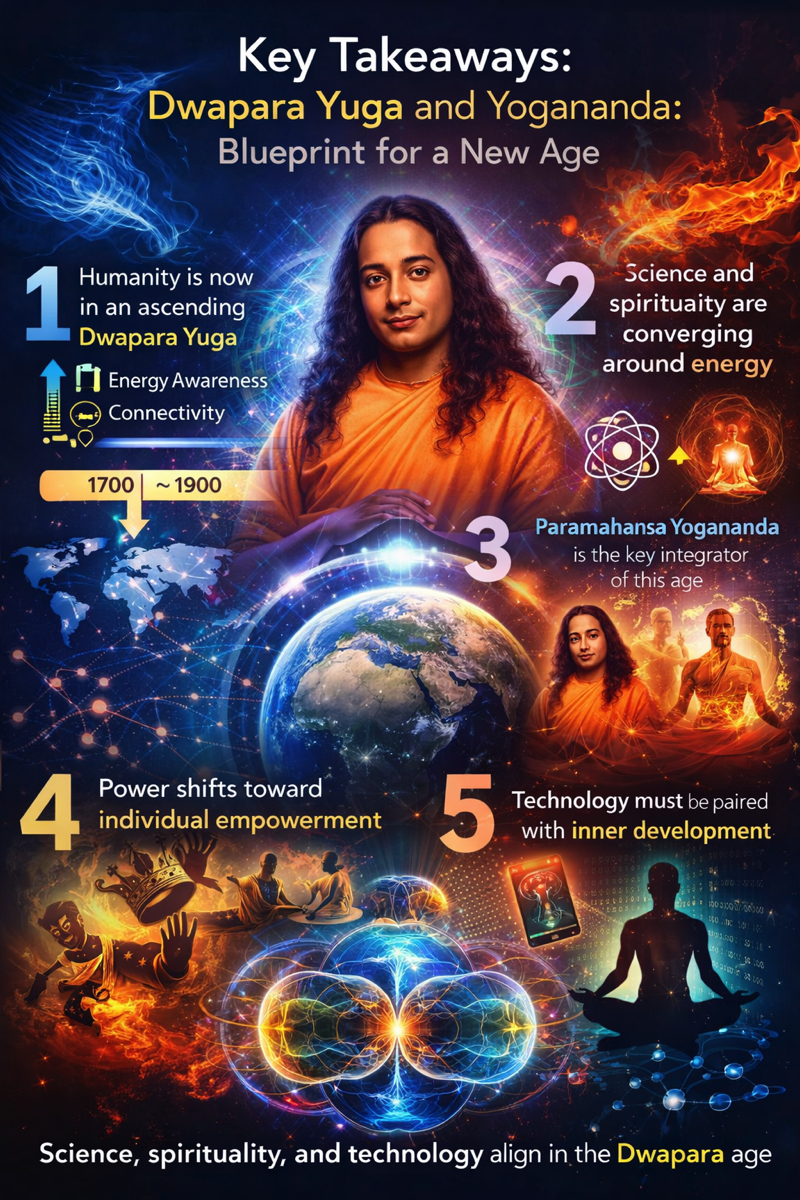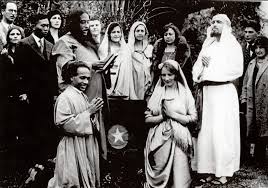Takeaway

It's been around 3-years since I first blogged here around AI. Today, generative, agentic, and ambient AI are all around us. I asked ChatGPT to summarize my 2007 book.
Top 5 Takeaways — Dwapara Yuga and Yogananda: Blueprint for a New Age
1 Humanity is in an ascending Dwapara Yuga (post-1700), fully expressed by ~1900. The book’s core claim is that modern scientific, technological, and social breakthroughs reflect a cyclical rise in human consciousness—specifically the Bronze (Dwapara) Age characterized by energy awareness and connectivity, not materialism.
2 Science and spirituality are converging around the concept of energy. Discoveries such as electromagnetism and relativity validate ancient teachings that matter is a form of energy—central to Dwapara Yuga thinking and predicted by Sri Yukteswar decades before modern physics confirmed it.
3 Paramhansa Yogananda is the key East–West integrator of this age. Yogananda’s mission translated ancient yogic science into a universal, non-sectarian framework, emphasizing direct personal experience of the divine, healthy living, and meditation—scaled through modern media consistent with Dwapara dynamics.
4 Dwapara Yuga undermines centralized, coercive power structures. The age favors individual empowerment, meritocracy, global networks, and the erosion of monopolies, authoritarianism, rigid hierarchies, and dogmatic institutions—political, economic, and religious alike.
5 Technology must be paired with inner development to avoid new forms of control. While the internet, media, and advanced technologies are natural tools of Dwapara Yuga, the book warns that without spiritual maturity they can replicate Kali-age domination patterns; inner discipline (e.g., meditation) is presented as the balancing force.
Top 5 Takeaways — Dwapara Yuga and Yogananda: Blueprint for a New Age
1 Humanity is in an ascending Dwapara Yuga (post-1700), fully expressed by ~1900. The book’s core claim is that modern scientific, technological, and social breakthroughs reflect a cyclical rise in human consciousness—specifically the Bronze (Dwapara) Age characterized by energy awareness and connectivity, not materialism.
2 Science and spirituality are converging around the concept of energy. Discoveries such as electromagnetism and relativity validate ancient teachings that matter is a form of energy—central to Dwapara Yuga thinking and predicted by Sri Yukteswar decades before modern physics confirmed it.
3 Paramhansa Yogananda is the key East–West integrator of this age. Yogananda’s mission translated ancient yogic science into a universal, non-sectarian framework, emphasizing direct personal experience of the divine, healthy living, and meditation—scaled through modern media consistent with Dwapara dynamics.
4 Dwapara Yuga undermines centralized, coercive power structures. The age favors individual empowerment, meritocracy, global networks, and the erosion of monopolies, authoritarianism, rigid hierarchies, and dogmatic institutions—political, economic, and religious alike.
5 Technology must be paired with inner development to avoid new forms of control. While the internet, media, and advanced technologies are natural tools of Dwapara Yuga, the book warns that without spiritual maturity they can replicate Kali-age domination patterns; inner discipline (e.g., meditation) is presented as the balancing force.



